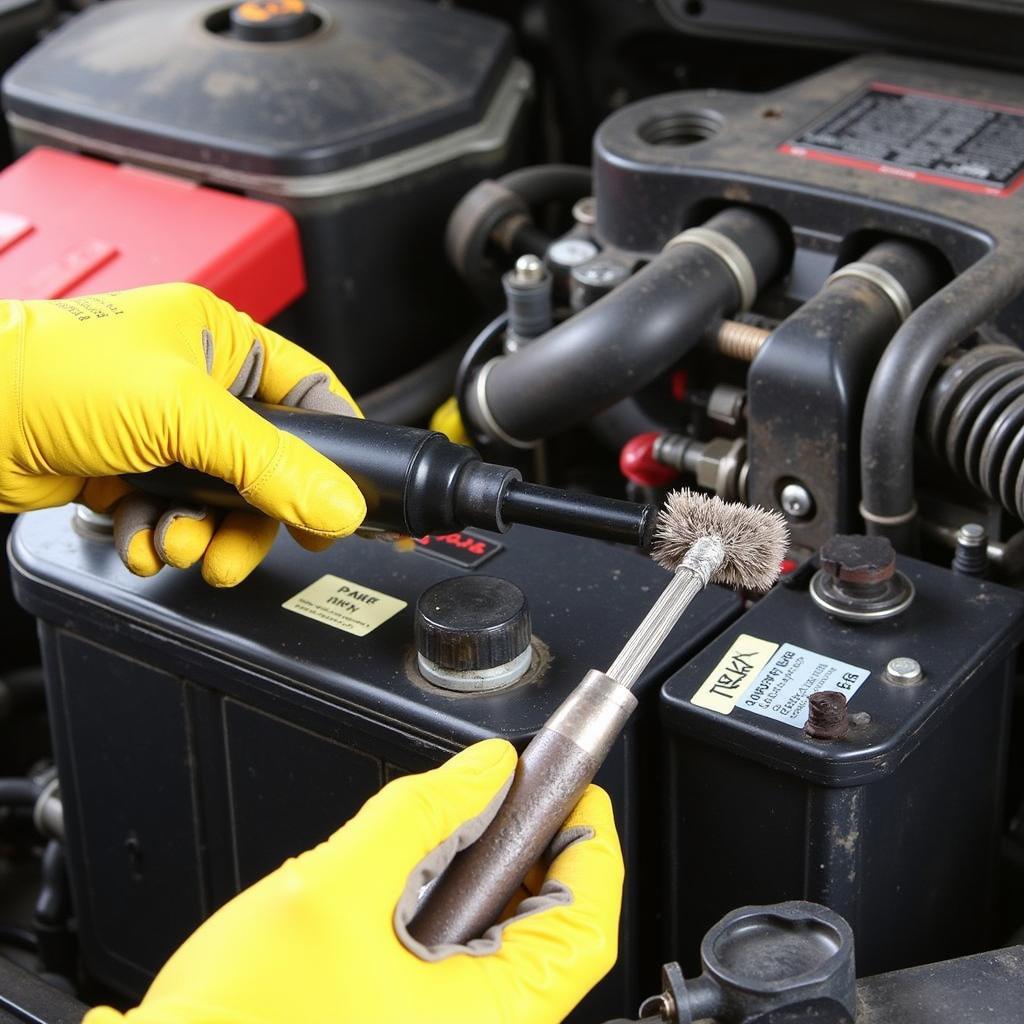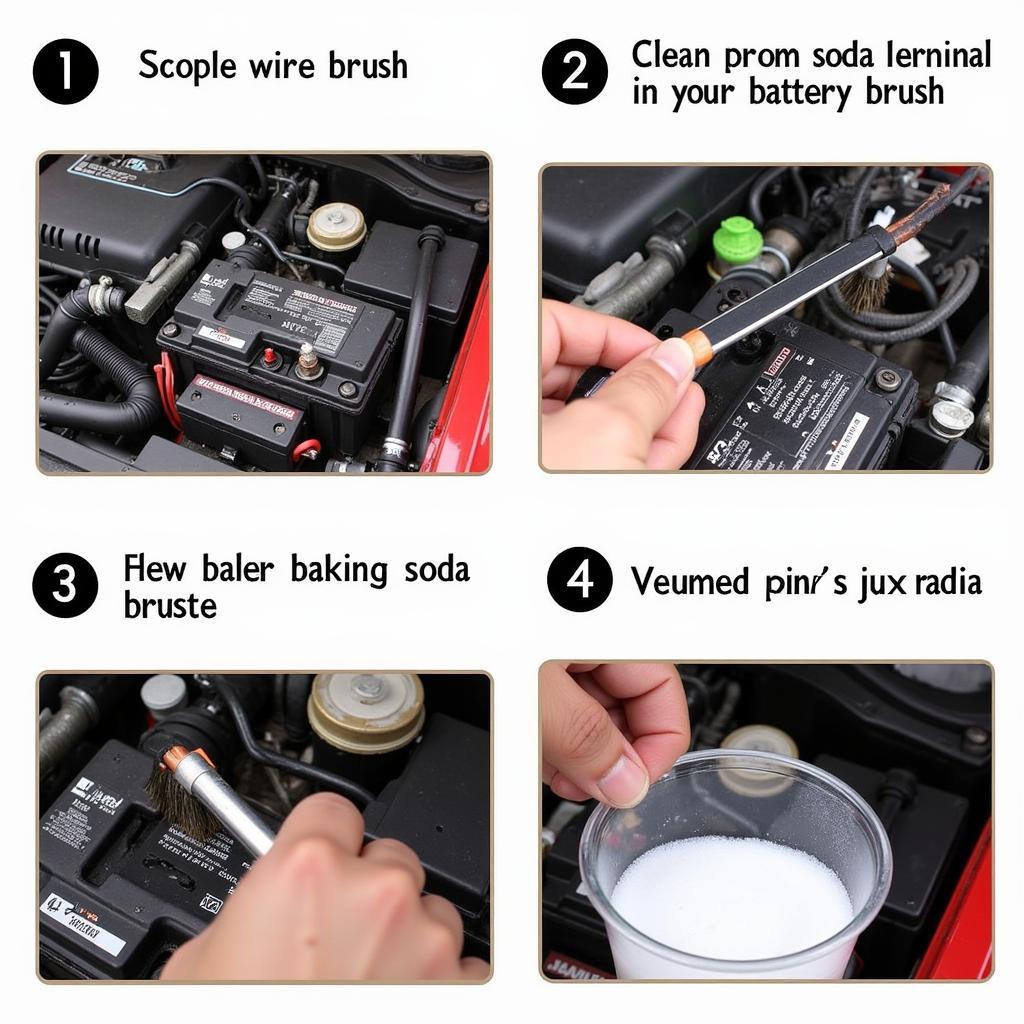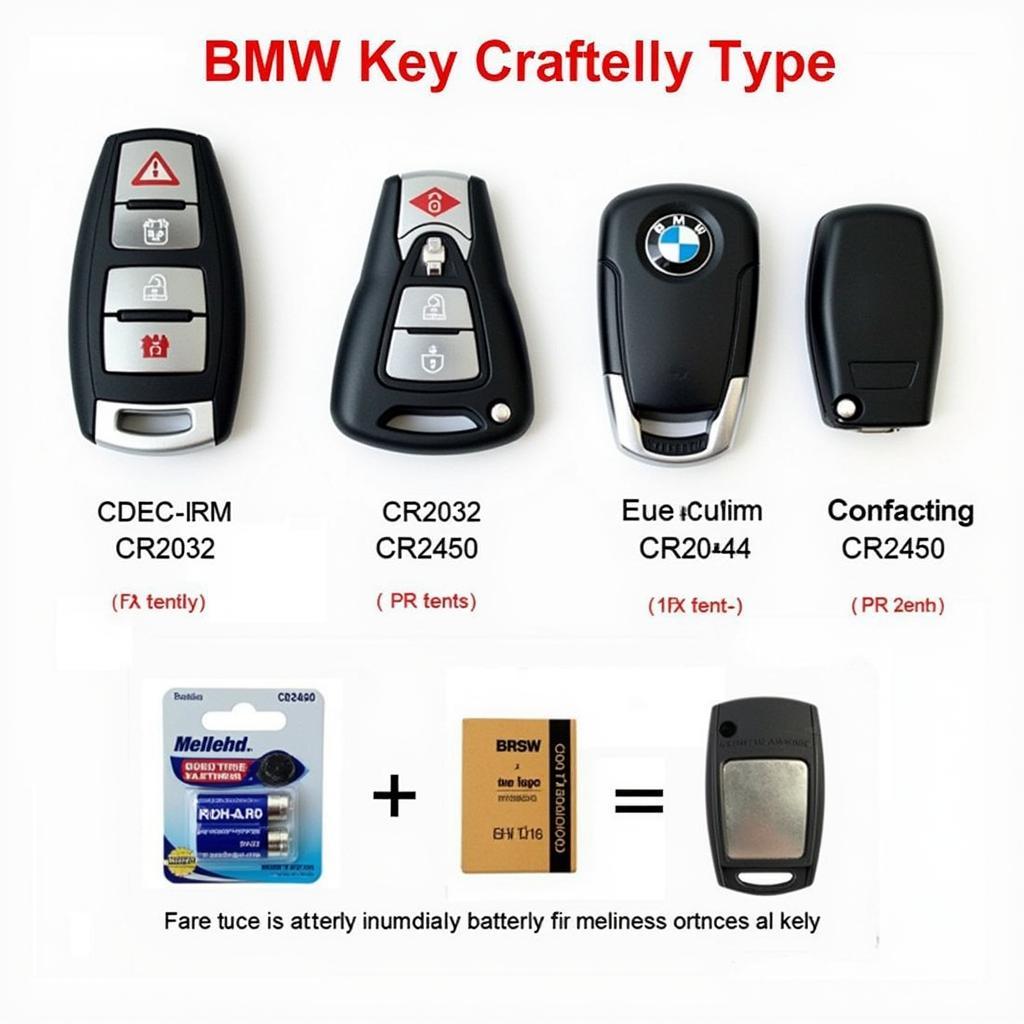Car battery connection issues can leave you stranded and frustrated. Understanding the causes, symptoms, and solutions can save you time, money, and a whole lot of hassle. This comprehensive guide will walk you through everything you need to know about diagnosing and fixing car battery connection problems.
Recognizing the Signs of Car Battery Connection Problems
Identifying car battery connection issues early can prevent further damage and inconvenience. Some common symptoms include:
- Dim or flickering headlights, especially when idling.
- Slow engine cranking or clicking sounds when you turn the key.
- Dashboard warning lights, particularly the battery light.
- Malfunctioning electrical accessories like the radio or power windows.
- A car that starts fine initially but then struggles after a short drive.
- The car won’t start at all, even with a jump start.
If your vehicle exhibits any of these symptoms, it’s crucial to inspect your battery connections immediately. A loose or corroded connection can prevent the battery from delivering the necessary power to your vehicle’s electrical system.
Common Causes of Car Battery Connection Issues
Several factors can contribute to car battery connection problems. Corrosion is a primary culprit, forming a buildup on the terminals that impedes the flow of electricity. This buildup can result from battery acid reacting with the metal terminals over time. Loose connections, caused by vibrations or improper installation, are another frequent issue. Damaged battery cables, often due to age or exposure to extreme temperatures, can also disrupt the electrical connection. Knowing the cause of dead car battery is the first step in troubleshooting.
Corrosion: The Silent Killer
Corrosion appears as a white, powdery substance around the battery terminals. This seemingly harmless coating acts as an insulator, preventing proper electrical contact. Left unchecked, corrosion can significantly shorten the lifespan of your battery and lead to more serious electrical problems.
Loose Connections: A Simple Fix
A loose connection can be just as problematic as corrosion. Even a slight gap between the terminal and the cable can disrupt the electrical flow, leading to starting issues or intermittent electrical problems.
Damaged Cables: A Hidden Hazard
Damaged battery cables, whether frayed, cracked, or corroded internally, can also cause connection issues. These problems can be harder to detect visually, requiring closer inspection and sometimes even testing with a multimeter. If you suspect damaged cables, it’s often best to replace them.
 Cleaning Battery Terminals with a Wire Brush
Cleaning Battery Terminals with a Wire Brush
Diagnosing and Fixing Car Battery Connection Issues
Diagnosing car battery connection problems is relatively straightforward. Start by visually inspecting the terminals for corrosion or looseness. If you notice corrosion, disconnect the battery cables (negative first, then positive) and clean the terminals using a wire brush and a baking soda and water solution. Remember to wear safety glasses and gloves. After cleaning, securely reattach the cables, ensuring a tight fit. For loose connections, simply tighten the terminal bolts with a wrench. If the cables are damaged, you’ll need to replace them with new ones. If your vehicle has a remote car starter draining battery, the problem might lie elsewhere.
How to Clean Corroded Battery Terminals
- Disconnect the negative cable first, then the positive.
- Mix a solution of baking soda and water.
- Apply the solution to the terminals and scrub with a wire brush.
- Rinse with clean water and dry thoroughly.
- Reconnect the positive cable first, then the negative.
What if Cleaning the Terminals Doesn’t Work?
If cleaning the terminals doesn’t resolve the issue, the problem may lie elsewhere, such as a starter solenoid draining battery. In these cases, further diagnostic testing may be needed. You might be experiencing weak battery symptoms.
Preventing Future Car Battery Connection Issues
Regular maintenance can help prevent car battery connection issues. Periodically inspect your battery terminals for signs of corrosion and clean them if necessary. Ensure the cables are securely attached and free from damage. Keeping your battery clean and dry can also help minimize corrosion. For Corvette owners, understanding potential issues like a c6 corvette dead battery is vital for preventative maintenance.
“Regular battery maintenance is often overlooked,” says John Smith, Automotive Electrical Engineer at XYZ Auto Solutions. “Taking a few minutes to check and clean your battery terminals can prevent many common starting problems and extend the life of your battery.”
Conclusion
Car battery connection issues are a common but manageable problem. By understanding the causes, symptoms, and solutions outlined in this guide, you can effectively diagnose and fix these issues, keeping your vehicle running smoothly. Regular maintenance and prompt attention to any warning signs can prevent future problems and ensure your battery performs reliably for years to come. Addressing car battery connection issues is crucial for a trouble-free driving experience.
FAQ
-
How often should I clean my battery terminals? Ideally, every few months or whenever you notice corrosion.
-
Can I use a metal brush to clean my battery terminals? A wire brush is recommended, but avoid steel wool as it can leave behind metallic particles that can contribute to corrosion.
-
What should I do if my car still won’t start after cleaning the terminals? The problem may lie elsewhere in the electrical system. Consult a qualified mechanic for further diagnosis.
-
Can I jump-start a car with corroded battery terminals? It’s not recommended. Clean the terminals before attempting a jump start to avoid potential sparks or damage.
-
How long should a car battery last? Typically, 3 to 5 years, but various factors can influence lifespan.
-
What are the signs of a failing battery? Slow cranking, dim headlights, and electrical problems are common indicators.
-
Can I replace my car battery myself? Yes, but it’s essential to follow safety precautions and consult your owner’s manual for specific instructions.



